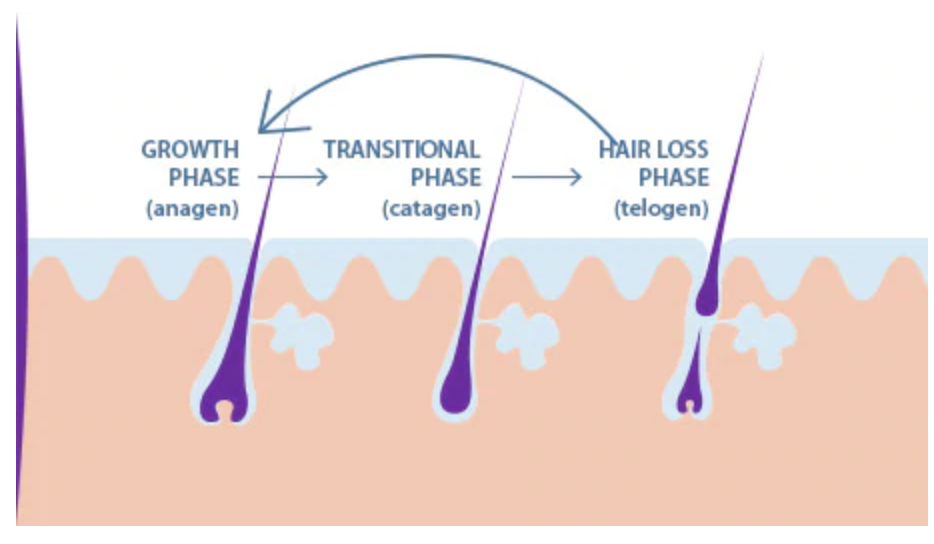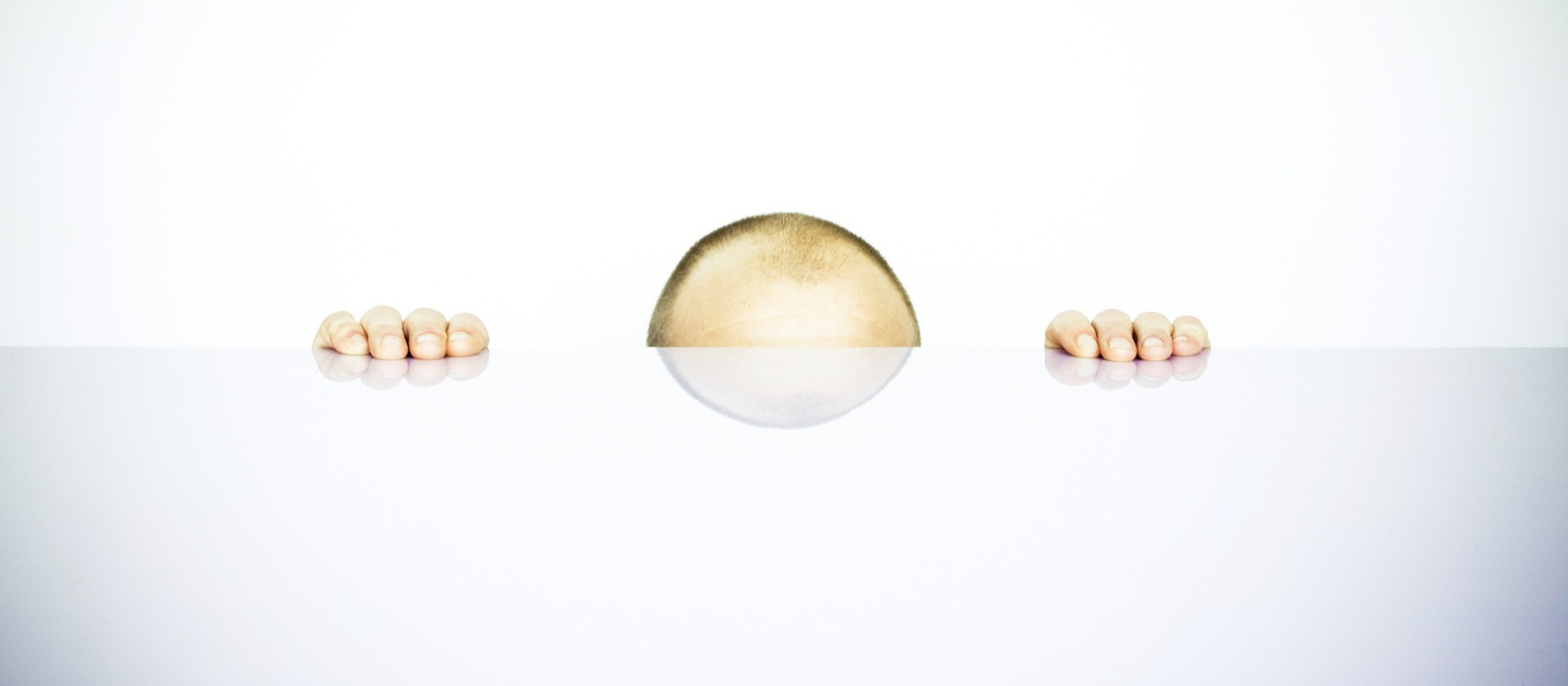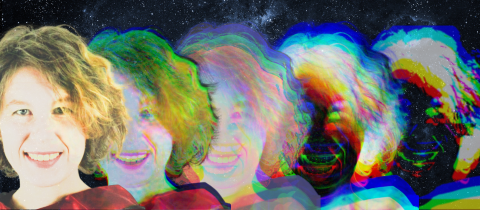This article was first published in The Skeptical Inquirer.
While losing the hair on our heads doesn’t have any serious medical implications on its own, it can be seriously damaging to our psyches. Studies have shown that both women and men with alopecia, or hair loss, experience increased stress, diminished self-esteem, and other negative psychological effects.
Some of us live in fear of our part widening or our hairlines receding. Others have made peace with their eventual journey to becoming a Patrick Stewart lookalike. Either way, you’ve likely heard a lot of unsubstantiated claims about behaviors that can cause baldness. As usual, some can be dismissed outright (no, masturbating won’t make you go bald), but some bear further investigation.
Most Hair Loss Is Due to Androgenic Alopecia, or Pattern Hair Loss
Although there are other types of hair loss, the most common type by far is androgenic alopecia. Also called male or female pattern hair loss, I actually prefer the less common name androgenetic alopecia, as it hints at the root cause of such balding: genetics.
This type of hair loss occurs when testosterone is metabolized into dihydrotestosterone (DHT), which can interact with androgen receptors in hairs, inducing miniaturization of the hair follicle. Mini hair follicles produce thinner, smaller, shorter hairs that grow slower than normal hairs and are easily pulled out. As for why only some people experience hair loss even though most humans have hair, hair follicles, and testosterone (yes, even biosex women), you can thank genetics.
Only some people have hair follicles that are genetically predisposed to shrinkage under the effects of DHT. Research has so far identified over 250 genetic loci associated with hair loss. Many, but not all, of them are located on the X chromosome. This can help explain the common observation that balding status seems to be passed down to you from your mother’s lineage. You can watch this SciShow video or this ASAP Science video to learn more about the genetics of androgenetic alopecia. However, the important take away for now is that even if your mom and her parents had full heads of hair their entire lives, you may still experience balding.
In men, pattern hair loss tends to start around the temples and crown of the head. Those afflicted tend to get a receding hairline that eventually meets up with their growing bald spot. Meanwhile, pattern hair loss in women usually looks like an overall thinning of the hair across the entire scalp and a widening of the part.
Although genetics are to blame for pattern hair loss, there are other behaviors, activities, or factors that can exacerbate pattern hair loss or cause other types of balding. To understand them, though, we need to know just a little bit about how hair grows.

Source: https://www.ducray.com/en-gb/hair-aging/how-to-accelerate-hair-growth
Human hair growth follows a three-phase cycle. First is anagen, wherein hair is actively growing and getting longer. Next is catagen, during which the hair is cut off from the blood supply of the scalp and the follicle prepares itself to grow a new hair. Last is telogen in which the follicle remains dormant, and the hair, though technically dead, remains anchored to the scalp.
Most of the hair you lose daily is from this last phase. Since the hair is no longer firmly attached to the scalp, it can be easily pulled free. If it’s not pulled out, as the follicle transitions back to anagen and begins growing a new hair, it will push the old hair out of the follicle. It’s normal to lose roughly fifty to 100 hairs (usually all from the telogen phase) per day. Any more than that, and you’re officially shedding.
With that out of the way, let’s look at what things, besides genetics, can lead to hair loss.
Hats
Assuming your hat fits correctly, it’s very unlikely to cause you to go bald. What it can do, though, is speed up the balding process if it’s already happening. The act of putting on or taking off a hat can pull out hairs that are already loosely attached to the head (such as those in the telogen phase or those growing from miniaturized follicles). This is especially true of close-fitting hats such as beanies.
If your hat is tight enough, it can cut off air and blood flow to your hair follicles, but it would need to be abnormally tight to do so. Even still, this constriction is unlikely to cause baldness on its own; it would rather just worsen already occurring balding.
Wearing Tight Hairstyles (Such as Cornrows, Buns, or Tight Ponytails)
What do Ariana Grande, Snoop Dogg, and Greta Thunberg have in common? They’re all at risk of traction alopecia! This type of hair loss occurs when hair follicles are pulled on for extensive periods of time, such as when hair is in a high ponytail, cornrows, or braids. Hair that has been chemically treated, such as with dye or relaxer, is especially vulnerable to this type of damage.
Traction alopecia is very common in people who wear their hair in braids or dreads for months at a time, but it has also been associated with wearing tight buns, weaves, and even tight helmets for activities such as snowboarding. Those with very long hair who wear it tightly bound, such as Sikhs, are at a unique risk for traction alopecia because the weight of their hair contributes to the tension put on hair follicles.
Traction alopecia typically results in hair loss along the hairline. The good news is that it’s reversible if you catch it in time. If early hair loss is noticed and steps are taken to reduce the strain on the follicles (such as wearing your hair down more), permanent bald spots can be avoided. If you’re wondering how tight is too tight for a ponytail, experts say that you’ll likely experience some discomfort or pain if your hairstyle is putting you at risk of traction alopecia. Other signs to look out for include hair thinning around the hairline, redness, bumps, itching, and headaches.
Certain Medications, Especially Chemotherapy Agents
Balding is a well-known side effect of chemotherapy agents, but did you know it can also occur with other drugs? Anticoagulants (like warfarin), antiretrovirals and amphetamines are just a few examples. Most drug-induced hair loss is due to telogen effluvium. Effluvium literally means “an emission or discharge,” and accordingly telogen effluvium refers to an abnormally high number of hairs falling out while in the telogen phase.
What specifically causes the telogen effluvium side effect varies with the drug. For example, when oral contraceptives are interrupted, the body experiences a drop in circulating estrogens. This drop triggers a high number of hairs to enter telogen phase. Because hairs normally spend about three months in telogen phase before falling out, roughly three months after the interruption, you’ll see a mass exodus of those hairs from your head.
Luckily, drug-induced hair loss is almost always reversible, although hair has been known to occasionally change color or curliness after treatments such as chemotherapy.
Excessive Combing/Brushing
If you really like to brush your hair, I have good news and bad news. The good news is that it won’t cause you to go bald. The bad news is that if you’re already going bald, it can make it worse.
Essentially, gently brushing or combing your hair should only pull out a few hairs. These are hairs that were already nearing the end of their telogen phase, and they’re part of the normal fifty to 100 hairs you lose every day. However, if you have androgenetic alopecia, damaged hair, or some other condition that makes your hair’s attachment to your scalp weak, then a brush can snag those weak hairs and yank them out.
To preserve your locks, you should avoid brushing your hair too often or for too long, especially when it’s wet. Not sure if you’re overbrushing? Take a look at your comb! If you’re pulling out more than a few hairs per brush, you should probably ease off a bit. If that’s not an option for you, consider switching to a wider toothed comb or brush, and avoid chemically or thermally harsh styling methods that can weaken your hair more.
Chemically or Thermally Harsh Styling
Using a flattening iron, dyeing your hair blue, or chemically relaxing it won’t cause baldness in and of itself (assuming all products are used correctly!), but they do cause damage to hairs, which can lead to breakage as well as dry and brittle hair.
Heat applied to the hair by any method causes gaps to appear in the hair cuticle. This increases friction between hair strands and disrupts the cuticle’s ability to reflect light, leading to dull-looking hair. Excessive exposure to sun and hair dyes have similar effects on the cuticle. Hair bleaches, perming solutions, and chemical relaxers work by making and breaking bonds between and within hairs, so it’s not really surprising that they can cause hair to become very brittle and break very easily by disrupting the cuticle.
These kinds of damage are bad for anyone’s hair. But if you’re already experiencing alopecia, then thermal or chemical damage can cause what hair you have left to break off, fall out, or become frizzy and dry. To keep hair healthy, you should limit your use of heat to <175 ˚C, only once a week, and never on wet hair.
Pregnancy, Miscarriage or Abortion
The end of a pregnancy can cause hair loss in much the same manner as stopping oral contraceptives can. When pregnant, humans experience high levels of circulating hormones. When a pregnancy ends, those hormone levels suddenly drop, triggering many hairs to enter telogen phase. Several months later, those hairs will exit telogen phase by exiting your head.
This type of hair loss is most commonly seen after giving birth. Indirectly, it explains why pregnant people are often said to have thick or shiny hair. It’s not just an illusion. Their high levels of circulating hormones result in thicker and healthier hair overall. Post-pregnancy hair loss can also occur without giving birth, although reports of hair loss after abortions or miscarriages are less common.
Trauma
Severe trauma, either physical or emotional, can lead to hair loss. If your hair follicles are physically damaged beyond the ability to produce new hairs, you’re experiencing scarring alopecia (as opposed to nonscarring, or reversible, alopecia). This can occur with severe burns or other injuries, but it can also occur as a result of something rubbing against hair follicles repeatedly or for a long period of time. This can be seen in people who wear tight socks losing the hair around their ankles, or in cats and dogs losing the hair underneath their collars. Even if the rubbing stops, the hair usually won’t grow back.
Extreme emotional stress can cause telogen effluvium and a loss of hair a few weeks to months after the event. Unlike hair loss from physical trauma, hairs lost due to stress should grow back.
Smoking
If you needed yet another reason to stop smoking tobacco (besides lung cancer and male infertility), at least one study has found a relationship between smoking and baldness in men. It’s believed that among many negative effects on the body, smoking leads to impaired circulation, resulting in decreased blood and oxygen flow to hair follicles. Tobacco smoke may also damage the DNA of follicle cells and lead to inflammation of the scalp, which is itself a risk factor for androgenetic alopecia.
We may not be able to control the genetic hand we’ve been dealt, but we can control how we play our cards. Whether you are at risk for androgenetic alopecia or not, you should take care to treat your hair well. Avoid excess heat, sun, and chemical product exposure; brush it often enough to avoid mats or dreadlocks but not so often that you’re pulling it out; and, as is generally a good rule, don’t smoke.







